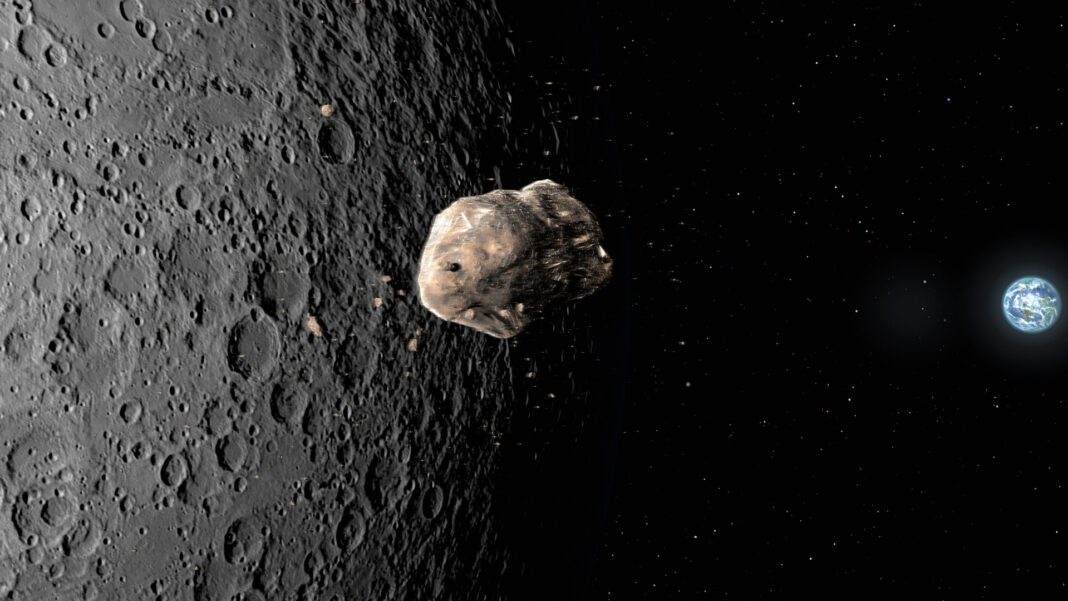In a dramatic escalation of planetary defense strategies, a team of scientists including NASA researchers has proposed blowing up asteroid 2024 YR4 with nuclear explosives to prevent it from potentially slamming into the Moon in December 2032. The 65-meter “city-killer” space rock, discovered in December 2024, initially raised alarms for a slim Earth impact risk but now poses a 4% chance of lunar collision, which could hurl debris toward satellites and potentially Earth. For space enthusiasts, planetary defense experts, and policymakers searching NASA asteroid 2024 YR4 nuclear plan, Moon impact risk 2032, or asteroid deflection DART successor, this preprint study—yet to undergo peer review—advocates a “kinetic disruption mission” over deflection due to tight timelines and uncertainties, echoing Hollywood’s Armageddon but grounded in NASA’s DART success. With a 0.00081% Earth risk ruled out, the focus shifts to lunar protection, but the proposal raises ethical, technical, and budgetary questions in an era of constrained NASA funding.
The study, titled “Space Mission Options for Reconnaissance and Mitigation of Asteroid 2024 YR4,” urges immediate planning for a 2028 launch window.
The Threat: 4% Lunar Impact Risk and Debris Dangers
Asteroid 2024 YR4, roughly the size of a football field, was flagged by NASA’s Center for Near-Earth Object Studies (CNEOS) after its December 2024 discovery, initially carrying a 3% Earth collision probability for 2032 that refined observations dismissed. Now, a 4% Moon hit odds remain, potentially carving a 1-km crater and ejecting over 100,000,000 kg of debris—enough to bombard satellites for years and pose low but nonzero risks to Earth.
- Debris Trajectory: Lunar ejecta could reach Earth in days, endangering the ISS or low-Earth orbit assets.
- Mass Uncertainty: Estimates range from 72.7 million to 2 billion pounds, complicating deflection.
| Risk Factor | Probability (2032) | Potential Consequences |
|---|---|---|
| Earth Impact | 0.00081% | Negligible |
| Moon Collision | 4% | 1-km Crater, Debris Cloud |
| Satellite Damage | High if Lunar Hit | Meteoroid Hazards for Years |
The Proposal: Nuclear ‘Kinetic Disruption’ Over Deflection
The ArXiv preprint, led by NASA’s Brent Barbee, dismisses deflection as “impractical” due to 2024 YR4’s unknown mass and the narrow 2028 launch window for a 2032 intercept. Instead, it advocates a “kinetic disruption mission” using two 100-kiloton nuclear devices—5-8 times Hiroshima’s yield—to shatter the asteroid into harmless fragments.
- Mission Options: Reconnaissance (e.g., repurposing Psyche/OSIRIS-APEX in 2028) for data, or direct disruption with 5-7 years prep.
- DART Lessons: Builds on 2022’s successful nudge of Dimorphos, but nukes for fragmentation.
Barbee’s team stresses urgency: “With a late 2028 launch, we’d have ~3 years to intercept.”
Challenges: Feasibility, Ethics, and Budget Realities
The nuclear option, while effective, faces hurdles:
- Technical Risks: Fragmentation could create more debris; precise yield needed.
- Ethical Concerns: Space nukes raise treaty issues (Outer Space Treaty bans WMDs); environmental fallout debated.
- Budget Constraints: Trump’s 2026 NASA cuts threaten funding; DART cost $330 million—nukes could exceed billions.
NYU’s Jef Boeke called it a “substantial step,” but Venter urged “extreme caution.”
Conclusion: Nuking the Lunar Threat—A Bold Planetary Defense Bet
NASA’s proposal to blow up asteroid 2024 YR4 before its 2032 Moon rendezvous is a high-stakes pivot from deflection, prioritizing disruption amid uncertainties. With a 4% lunar risk threatening satellites, the nuclear path—echoing DART’s success—demands swift action. For space defenders, it’s a wake-up: Will budgets and treaties allow it, or will recon suffice? The 2028 window closes fast. TOI



